Belinda wrote me…
Dear Lisa,
Just an enquiry. I work in child care and would like to teach this song I learnt as a student but I have not got the full song, I believe it is an Eskimo song or I think an American Indian (song). I can only type it as I would sing it. Here I go…
Oky Toky Unga
Oky toky unga, oky toky unga,
(Children do the actions of paddling a canoe while sitting on the floor)
Hey misha, dey misha, do misha dey,
(Then the next part goes something like this…)
Hexa coola misha,hexa coola misha
(Children then stop rowing and look around with hand up at forehead then repeat the song).Does this song sound at all famaliar? I would really love the correct words.
Belinda
If anyone can help with the lyrics to this song, please write me.
Thanks!
Lisa
UPDATE: Check the COMMENTS below for the full lyrics to this song!
For the lyrics to some other Native American songs, you can go to…
Mama Lisa’s Gabrielinos Page or
Mama Lisa’s Lipan Apache Page
This article was posted on Monday, October 3rd, 2005 at 1:12 pm and is filed under American Kids Songs, Apache, Children's Songs, Countries & Cultures, Creek, Eskimo, Eskimo Songs, Folk Songs, Gabrielinos, Languages, Muscogee (Creek), Native American Indian, Native American Indian Songs, Questions. You can follow any responses to this entry through the RSS 2.0 feed. You can skip to the end and leave a response. Pinging is currently not allowed.

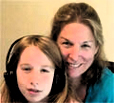


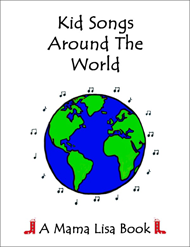
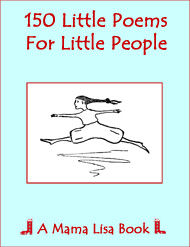
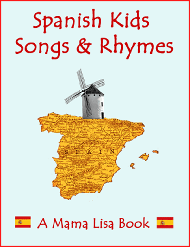
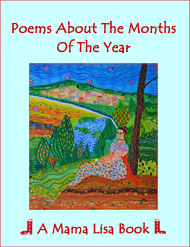
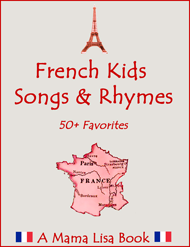
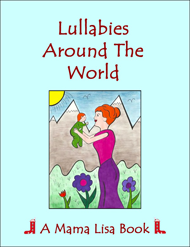
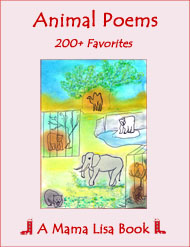
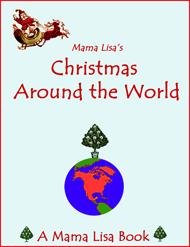
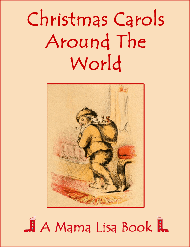
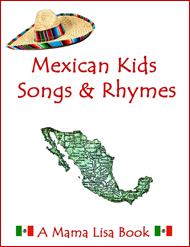
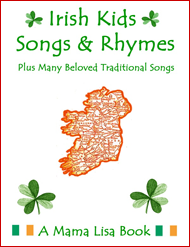
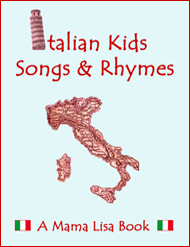
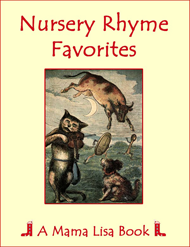
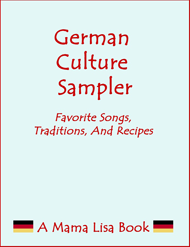
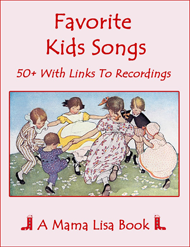
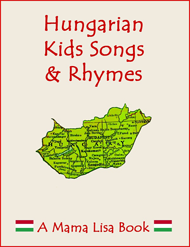
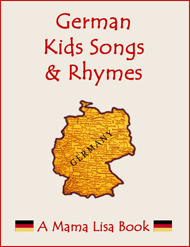

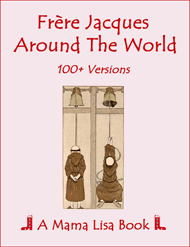

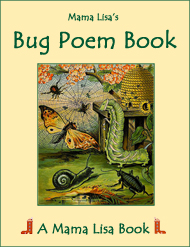
December 12th, 2009 at 6:00 pm
The camp I usually go to sings it like this:
Oshkosh nuga, oshkosh nuga,
a-little i-little o-little a
Oshkosh nuga, oshkosh nuga,
a-little i-little o-little a
Pepsi cola mishawannni….
Pepsi cola mishawannni….
Oshkosh nuga, oshkosh nuga,
a-little i-little o-little a
Oshkosh nuga, oshkosh nuga,
a-little i-little o-little a!
[repeat with Hand motions]
December 16th, 2009 at 12:50 am
i was beginning to think I had made this song up myself – I have a clear memory of Okki-Tokki-Unga being taught to us in yr 2 (second grade) at West Lynwood Primary (now Parkwood PS) in Australia.
We, too, were told it was an “Eskimo” song. I’m not sure our teacher had any idea that “Eskimo” are more than one people. I have always remembered the lyrics though would not be brave enough to try to spell them here. I had forgotten the actions, but now reminded , I can picture myself doing them on the floor in the classroom.
Until today, I had never found any incidence of it on the internet and the friends I still keep in touch with from yr 2 don’t seem to recall it (I know you would Roy, but you moved to Japan and I can’t get hold of you anymore). I had no idea the Wiggles had included it on an album – my son would be the only toddler in the world who couldn’t care less about the wiggles, wouldn’t he? – (preferred them when they were called the Cockroaches myself). I will now have to actually BUY a wiggles CD/DVD to find this wondrous song.
Thaks to you all for the memories, and for reassuring me I have not imagined this beautiful tune. Glad I’m no tthe only one who loved it, but I’ll probably walk around the office sinign it like a twit now
January 8th, 2010 at 3:27 pm
I kept singing this old song that I learned as a child. I am an African American and most of my neighborhood was Jewish. I thought the song was derived from Hebrew.
I wasn’t familiar of how to spell the words. But, I found this website by phonetically spelling the words a close as I could to the way we sang the song. Once I hit this website I became so excited because I instantly recognized the words.
February 6th, 2010 at 10:12 pm
Like Heather, I’m familiar with the Norwegian version, but with minor adjustments in some sounds. So, even in a small country like ours, there are variations! I thought the words were from some kind of latin heritage – stoked to hear that it’s inuit and would love for Heathers second theory to be true! (Although I doubt it… the tune is too “modern” compared to traditional Nordic music don’t you think?)
Atte katte noa – Atte katte noa
Emisa, demisa, dollemissa dei
Atte katte noa – Atte katte noa
Emisa, demisa, dollemissa dei
Setra kollamissa rato, setra kollamissa rato.
Atte katte noa – Atte katte noa
Emisa, demisa, dollemissa dei
So strange… I woke up with the “emisa, demisa”-part in my head this morning and couldn’t remember the rest. Forgot it during the day, but now, while brushing my teeth before bed, all of a sudden remembered the “Atte katte noa” and could finally google it and learn all this!
It’s in German too… Spotify-link:
http://open.spotify.com/track/0LWhCiPyDfRdTDVz3RKbhC
February 21st, 2010 at 12:13 am
umiak kayak muckluck tupik. umiak kayak muckluck tuik. umiak is a boat for many men. kayak is a boat for one man .umiak kayak eskimo words learn them if you can. muckluck is an eskimo boat. tupik is an eskimo tent. if you heard an eskimo say these words you would know exactly what he meant.
April 30th, 2010 at 3:18 am
I found this information re: Kee Chee on scoutorama (the lyrics here don’t exactly match what I learned (written on my earlier post), but the hand positions are the same.
Kee Chee
Lyrics
A wuni kuni ka yah wuni, [Repeat.]
Ahyi yi iki ay kae ayna, [Repeat.]
Ah ooo, ah ooo, ah dee mee KEE CHEE.
Action
The beginning “A” is done with hands “rumbling” on own legs, then with each time sing through the song, do a different action…
1.Hands on own knees; hands on knees of person to the left; hands on own knees; hands on knees of person to the right.
2. Hands on own knees; hands crossed on own knees; hands uncrossed on own knees; Left hand on knee of person to the left while right hand in knee of person to the right.
3. Left arm extends forward; right hand touches left wrist then left shoulder; left hand crosses to to right shoulder; right arm extends forward; left hand touches right wrist then right shoulder; right hand crosses to left shoulder. (At end of song, hands are crossed, touching opposite shoulder.)
CommentShould have Indian Chant feel. Works great when done in a circle. When you get good, speed it up!
The youtube video of the school children singing Ani couni chaouni posted bears only a vague resemblence to the Girl Scout Kee Chee that I recall.
Also, I reported earlier that sticks were used with Kee Chee. But I was incorrect in saying so. Sticks were used in another Girl Scout song-game ( in Florida early 1960’s) which I would like to locate the words and origin:
The lyrics sounded like this:
Ma kayo koee tayo
Eh koe tahno
Ma kayo koee tayo
Eeh koe tahno
One scout would sit in front of another and for the first verse strike the 2 upright wooden sticks(about 10 inches in length and about 1 inch diameter) on the floor in front of them, then strike them down so the tips that were originally upward strike the floor in front of them, and then strike their own sticks together. This motion is repeated thru the entire verse in rhythm with the chant.
At the end of every verse, when you sing “tahno”, you again hold both sticks upright and strike both lower tips to the floor twice (once for “tah” and once for “no”)
Verse 2 Same as 1, except instead of striking your own sticks together, you strike your right stick to your partner’s right stick
Verse 3 Same as 1, except instead of striking your own sticks, you strike your left stick to your partner’s left stick
Verse 4 Same as 1, except you strike both your partner’s sticks with both of your sticks from the inside out
Verse 5 Same as 1, except you strike both your partner’s sticks with both of your sticks from the outside in
Verse 6 Same as 1, except you gently toss your own right stick in the air with a half flip and catch it
Verse 7 Same as 1, except you gently toss your own left stick in the air with a gentle half flip and catch it
Verse 8, Same as 1, except you gently toss both of your own sticks in the air with a half flip and catch them
What a fun website!
June 6th, 2010 at 4:03 pm
It is a small world! I’m going sea kayaking for a “team building” experience at my job, and I too remembered this song from Girl Scouts (’60). The Minnesota version has the Eskimo hunter with a bow and arrow hunting walrus. Similar paddling, Essa coa mishi wana, Essa coa mishi wana (hand up to shade your eyes as you look for the walrus) and bing, instead of bang, as you hit you mark. Then slowly with effort pull in the walrus hand over hand, to the boat. Now happily sing, Atakata nuva, atakata nuva,hey missah day missah doe ah misah day
God bless us all!
June 18th, 2010 at 9:13 pm
My grandfather (greek) used to sing something similar to the below song. He was taught it by his mother (my great-grandmother). Anyone know the official words or translation?
Ooom Key Shannee annee mannee annee
Ish key quu key quee kway-ah, quee kwai-ah
Shannee annee mannee annee
Ish key quu key quee kway-ah, quee kwai-ah
Oh nick-o-name-o, Oh shannee annee oopah,
Oh nick-o-name-o, Oh shannee annee oopah,
oopah oopah oopah
Oh nick-o-name-o, Oh shannee annee oopah,
Oh nick-o-name-o, Oh shannee annee oopah,
oopah oopah oopah
Anyone know anything like that?
June 19th, 2010 at 11:26 am
Mike – Would you know what language it’s in? -Lisa
June 20th, 2010 at 12:35 pm
Sorry. We’ve always been told that it is native american language (maybe eskimo), but I didn’t want to rule out the possibility of it being greek (since the nick-o-name-o could have just been generations mispronouncing nicodemo). Thanks.
July 20th, 2010 at 9:55 pm
Here’s how we learned the Kee Chee song in Syracuse, in our Ukrainian scout group:
A uni kuni cha a uni,
A uni kuni cha a uni,
Ayayay yiki ay kayevis,
Ayayay yiki ay kayevis,
A oo, a oo, a uni ki chi
August 7th, 2010 at 7:54 pm
Now what I was looking for when I cam across this website was:
what Janet said:
February 21st, 2010 at 12:13 am
umiak kayak muckluck tupik. umiak kayak muckluck tuik. umiak is a boat for many men. kayak is a boat for one man .umiak kayak eskimo words learn them if you can. muckluck is an eskimo boat. tupik is an eskimo tent. if you heard an eskimo say these words you would know exactly what he meant.
Unfortunately because a kayak is not, as the words say, a boat for one man, I lost a bet even though I recalled the song from oh say almost 40 years ago in a Framingham, MA elementry school music class ;)
September 9th, 2010 at 9:00 pm
I would love to find the connection between the norwegian version and native american version of the songs. I am currently working on a paper for my ethnomusicology class specifically on the Norwegian influence of thier songs with Native American songs or vice-versa.Does anyone know the ties between the Sami and other Native American tribes in the Arctic Region?
September 15th, 2010 at 9:25 pm
I believe the song went like this…at least where I grew up in Missouri
Osh Kosh Nuga Osh Kosh Nuga Hey diddle Hey diddle Hi Diddle Ho
O mis o kow O mis okowani Hummmh
The same verse over and over while acting like you are paddling……about a boy looking for his tribe and the nuga is the canoe he is paddeling and stop and shouting for his tribe members…
Does anyone have the true full song…I learned this in the 70’s.
October 20th, 2010 at 2:36 pm
Leigh and Mike, I recall this song, I’ve recently taught it to my 2 year old grandson but I obviously had the pronounciation all wrong, i sang it as:
shunny money dunny money dash nee quo quee qui oh, quee qui oh.
shunny money dunny money dash nee quo quee qui oh, quee qui oh.
Oh hi oh dee oh, oh shunny money dee oh, oh hi oh dee oh, oh shunny money, oompah oompah oompah pah
This song seems to have always been with me, I don’t even know when I learned it, I’m from Oklahoma and assumed it was Native American. But I would love to know the translation…………….anyone?
December 5th, 2010 at 6:52 pm
Here is the full version I remember from our 4th grade section on Alaska:
umiak kayak mukluk tupik, umiak kayak mukluk tupik
umiaaaak, a boat for many men
kayaaaak, a boat for one man
if you heard an Eskimo say these words
you’ld know, exactly what he meant.
umiak kayak mukluk tupik, umiak kayak mukluk tupik
Mukluk is an Eskimo boot
Tupik an Eskimo tent
if you heard an Eskimo say these words
you’ld know, exactly what he meant.
umiak kayak mukluk tupik, umiak kayak mukluk tupik
umiaaaaak, kayaaaaak,…..mukluk tupik, eskimooooo.
January 30th, 2011 at 3:35 pm
i don’t think that the sami people EVER had contact with native american (or first nations) peoples in the distant past. the two groups lived at too great a distance from each other, and the route between the two peoples, if anyone ever dared to traverse it, would have been quite dangerous. the vikings and norsemen may have explored parts of north america, but they may never have encountered any indigenous peoples there. so native american and eskimo songs probably had NO influence on norwegian folk songs (and vice versa).
February 28th, 2011 at 11:03 pm
Re: Safia’s question about the sticks back and forth. I am a Girl Scout, former leader, and the song with the stick movements is from the Phillipines. We researched lots of things Filipino for Thinking Day one year, made the sticks, and performed it for our parents. I also remembered doing it when I was a girl in Girl Scouts.
On another note (pun intended), I remember the same words for the Kee Chee song that Safia remembered.
July 8th, 2011 at 1:31 am
In Camp Fire we call the sticks Lummi sticks. But recently I found several sites confirming that this is a Maori song tradition. The words are similar as is the melody and the stick movements.
Mah Koo Ay
Ko Tay Oh
Ay Koo ee
Tah – – Nah
We also sang the Kee Chee song but we called it Ah Wooney Cooney Cha and it is in some of our song books.
August 15th, 2011 at 11:29 am
looking for an old indian song i sang at girl scout camp I was only 7 so i am not sure of the spelling. a woonie coon a coonie a woonie coon a coonie yi yi yi icky yi camos a woo awoo a woonie coon a woon anyone remember the words or the name of the song
August 15th, 2011 at 2:29 pm
Darla, please read Lisa’s comments on March 6th and/or Aug. 12th 2009 above.
September 5th, 2011 at 1:27 pm
In response to Jonathan Becker’s post about the Sami and Native American–Jared Diamond, in his book Collapse, devotes several chapters to the Viking expansions. They did at least found community in North America, but had very poor relationships with the natives there and eventually evacuated the settlement.
Their colony on Greenland also came into conflict with Inuit tribes who were moving into the area from the west. According to Mr. Diamond, the Norse were unable to compete because of their adherence to Norse farming and hunting methods and their refusal to learn other methods from the better adapted Inuits.
There was a fair amount of trade between Greenland, Iceland and the homeland, so it is conceivable that the Norsemen could have transferred songs and stories back to their homeland.
September 5th, 2011 at 2:02 pm
I remember this song as well, eleven years ago when I was in second grade with my class. I remember that we had to use canoeing paddle motions.
A-ta-ka-ta/ nu-va /a-ta-ka-ta/ nu-va
A-missa day/ missa-doe-a / missa-day
Hexa/ conn-ah/ missa- wah ta/ Hexa/ conn-ah/ missa- wah ta/
I wonder what it could mean as well.
September 9th, 2011 at 1:06 pm
Words to Creek Lullaby:
Baby nota, nota, nota.
Lasa hako kahn, i am say
foxy no alah-ha-kay
foxy no. i am say
baby. baby
September 25th, 2011 at 3:00 am
@ George & Darla . . .
I was looking for the remaining words to the “a uni kuni” song.
When I went to Girl Scout camp on many occasions, we’d sing that song. It was, as I remember it, an “Indian” – now called “Native American” rain song. It was sung to, hopefully, cause rain in the usually dry New Mexico mountains where our Girl Scout camp, Rancho del Chaparral, was located.
I would sing it daily, during the summer, in my backyard as a child. You see, I had swimming lessons every day and I was terrified of the water . . . and of my swimming teacher, Mrs. Meyers. I will never forget her nor will I ever forget singing that song day after day. If it rained, lessons were cancelled. Little did I understand at the time, any cancelled lesson was made up at a later date. LOL! I distinctly remember the tune and the first verse or two, but couldn’t remember the rest. I think I have put it together . . . mostly thanks to George! (phonetically . . . as I have no idea how to spell the words):
Ah uni kuni cha a uni
Ah uni kuni cha a uni
Ay Ay Ay iki ay kyanis
Ay Ay Ay iki ay kyanis
Ah u, ah u, ah uni kee chee
So may different versions on here!! Guess I’ll always wonder where it really originated and what it really means!
September 25th, 2011 at 4:46 pm
Ani kouni kaha ouani
Ani kouni kaha ouani
Awa wo bikana kaina
Awa wo bikana kaina
Eaou ani bitsini
Eaou ani bitsini
Iroquois
Ani couni chaouani
Ani couni chaouani
Awawa bikana caïna
Awawa bikana caïna
E aouni bissini
E aouni bissini
here are the lyrics for the song Deanna was asking about it is an Iroquois song if you want to hear another version listen to Oota Dabun on you tube
October 23rd, 2011 at 10:04 pm
Just located a great ethnomusicology source for the Girl Scout “stick song” or “lummi” or “lemmi sticks” as the Campfire girls and some Girl Scouts called them.
http://folksong.org.nz/epapa/, which includes some fun you tube links.
“Ma kayo koi tayo
Ae koi tan no.”
According to this site, this song is are connected to the Maori stick games of New Zealand, particularly the second verse of the song “E Papa Waiari”-the tune is different, but the similarity of the stick movements and the phonetics are unmistakable.
If you still need someone to sing this song, or the 1960’s American Girl Scout version or “Kee Chee” (Ani kuni), I can still sing them. It is amazing to here the Iroquois, French, Spanish, and other places’ present day versions of “Ani Kuni” on youtube as suggested by an earlier post.
October 23rd, 2011 at 10:15 pm
Mama Lisa’s website has wonderful videos of E Papa Waiari and the Maori “stick game” from John Archer in New Zealand!
October 23rd, 2011 at 10:18 pm
Mama Lisa’s website has wonderful videos of the Maori E Papa Waiari stick game.
January 26th, 2012 at 6:03 pm
I’m looking for the lyrcs to a song called: An Indian Mother’s lullaby (First Nations)
The beginning is: I will cover your little feet with the soft skin of a moose
I”ll make you a dagger to wear at your belt with the feather of a goose…
February 1st, 2012 at 9:04 pm
I found this at scoutorama.com:
Kee Chee Song
Lyrics
A wuni kuni ka yah wuni, [Repeat.]
Ahyi yi iki ay kae ayna, [Repeat.]
Ah ooo, ah ooo, ah dee mee KEE CHEE.
Action
The beginning “A” is done with hands “rumbling” on own legs, then with each time sing through the song, do a different action…
1.Hands on own knees; hands on knees of person to the left; hands on own knees; hands on knees of person to the right.
2. Hands on own knees; hands crossed on own knees; hands uncrossed on own knees; Left hand on knee of person to the left while right hand in knee of person to the right.
3. Left arm extends forward; right hand touches left wrist then left shoulder; left hand crosses to to right shoulder; right arm extends forward; left hand touches right wrist then right shoulder; right hand crosses to left shoulder. (At end of song, hands are crossed, touching opposite shoulder.)
Scoutorama.com
February 1st, 2012 at 9:08 pm
From gsleaders.org:
Lummi Sticks
Lummi Sticks is just one name for this type of activity.
Carol Greene
Los Gatos, California / Girl Scouts of Santa Clara County
When I was twelve, I attended Camp Lone Tree, a Girl Scout camp in Michigan. The activity that stands out most in my mind was Lummi Sticks. We each searched the woods, found two straight sticks about 1 x 14 , and made them smooth with our pocket knives and sandpaper. Then we practiced the various moves with a partner until we got quite proficient at them. As I look back on this activity, we certainly had some brilliant camp directors to find such a popular activity that would keep us busy in our spare time for two weeks!
Currently, much emphasis is being placed in the schools on exploring many different multi-ethnic cultures. Lummi Sticks is a game that originated with the Lummi Indians who are the farthest north of the Puget Sound tribes. (Lummi is generally pronounced with a short u, but the tribe name has a long u sound.) Other Polynesian and New Zealand cultures have similar games with different songs.
Since it is an activity that appeals to all ages, why not try this activity with your troop. I have even taught this game to groups of sixty children at a time. The throwing moves are the only moves that I do not teach first graders. Lummi sticks can easily be made by cutting 3/4 x 36 dowels in half, but that can get costly for big groups. Here is a way to make them by recycling your old newspapers. The finished sticks are also safer since the children will be less likely to get hit with a flying stick: therefore, the children become more daring.
Supplies:
12 sheets newspaper approximately 14 x 24 each
2 sheets butcher paper, fadeless, or wrapping paper approximately 8 x 14
masking tape
permanent pens
white glue
Directions:
Place 6 sheets of newspaper on top of each other.
Make a fold on the bottom of the pack of newspaper about 1/4-3/8. Fold over twice more until it rolls easily. Then roll into a tight tube as straight and even as possible.
Wrap strips of masking tape around the top, bottom, then 1/4, 1/2, and 3/4 of the way down the tube.
Make the second tube the same way.
Glue the sheets of butcher paper as you roll the paper around the tubes.
Decorate the tubes with the permanent pens.
I demonstrate the stick movements by first hitting the sticks on the floor 4x, then flipping them one hand at a time 4x, then tossing sticks to the other hand 4x, then flipping both sticks at the same time.
The children are always impressed with the flipping movements, even though they are quite easy to do. Have fun becoming skillful at Lummi Sticks!
Playing the game:
Learn the song first since it is the glue that keeps everyone together. Then partners sit cross-legged facing each other no more than two stick lengths apart, vertically hold lower half of the sticks.
Do each verse twice: (Change the move for #3 in each new verse.)
Rhythm: 1-2-3- Lummi stick pattern for verse one.
Ma koo ay 1. Hit bottom of both sticks down on floor
G G E 2. Hit top sides of both sticks together
1 2 3 3. Hit tip of right stick on floor.
Ko tay o 1. Hit bottom of both sticks down on floor
G G E 2. Hit top sides of both sticks together
1 2 3 3. Hit tip of left stick on floor.
Ay koo ee 1. Hit bottom of both sticks down on floor
G F E 2. Hit top sides of both sticks together
1 2 3 3. Hit tip of right stick on floor.
tah — nah 1. Hit bottom of both sticks down on floor
F D 2. Hit top sides of both sticks together
1 2 3 3. Hit tip of left stick on floor.
Mah koo ay 1. Hit bottom of both sticks down on floor
F F D 2. Hit top sides of both sticks together
1 2 3 3. Hit tip of right stick on floor.
Ko tay o 1. Hit bottom of both sticks down on floor
F F D 2. Hit top sides of both sticks together
1 2 3 3. Hit tip of left stick on floor.
Ay — koo-ee 1. Hit bottom of both sticks down on floor
F E D 2. Hit top sides of both sticks together
1 2 3 3. Hit tip of right stick on floor.
tah — nah 1. Hit bottom of both sticks down on floor
E C 2. Hit top sides of both sticks together
1 2 3 3. Hit tip of left stick on floor.
Other verses — the same moves for 1 & 2, then the new move for 3 beat:
2. Tap the tips of both sticks on the floor.
3. Hit tip of R. stick to partner s R. stick, then tip of L. stick to partner s L. stick.
4. Partners hit both sticks together at the same time.
5. Turn the R. stick toward your body, let go when it is straight up, and it will fall right into your upturned palm. Do the same with the L. stick.
6. Flip both sticks at the same time.
7. Point both sticks flat toward your partner, toss both sticks to your opposite hand by throwing the left stick over the right stick.
8. Partners throw R. sticks to each other at exactly the same time, then L. sticks
9. Partners throw both sticks at the same time. (One throws sticks through the center, the other throws outside, carefully keeping the sticks vertical.)
March 10th, 2012 at 1:42 pm
I learned it this way back in the 1960’s:
A-woonie coonie cha a woonie.
A-woonie coonie cha a woonie.
Eye-yi-yi-yiki-yi-ki yea moose.
Eye-yi-yi-yiki-yi-ki yea moose.
A-wun. A wun-i-chi-chi ahhh!
I have no idea what it means but I still sing it to children! (smile)
Have a great day!
Christine Day Madsen (PS I spelled it phonetically)
March 26th, 2012 at 12:03 pm
Ani Kouni Chaouani – When the night descends on the indian village
Awawaw bikanawh kahina – The medicine man disapears into the forest
E aouni bissini – he touches his hand to the soil.
Iroquois folk song .
April 18th, 2012 at 3:24 pm
In the Netherlands they teach this to children to improve their articulation.
Atta Kata moeva (2x)
E mi sa de mi sa doe la misa dee
Atta Kata moeva (2x)
E mi sa de mi sa doe la misa dee
Hek sa kor la mi sa for tee (2x)
Atta kata moeva (2x)
E mi sa de mi sa doe la mi sa dee
April 25th, 2012 at 10:44 am
I learned it a little differently through girl scouts. It was also supposed to be an Eskimo hunting a while and waving to his girlfriend or wife on shore. It went:
Hey Mashimba mishewaka
Hey Mashimba mishewaka (hand on forehead searching across the water for the whale)
Aki aki umba aki aki umba
Hey little hi little ho little hey
Aki aki umba aki aki umba (arms folded across each other at cheat rocking back and forth like a boat)
Hey little hi little ho little hey (waving to shore)
Hey Mashimba mishewaka (pow) (shooting harpoon or gun motion)
Hey Mashimba mishewaka (pow)
Aki aki umba aki aki umba
Hey little hi little ho little hey
Aki aki umba aki aki umba
Hey little hi little ho little hey
Laurie
June 20th, 2012 at 3:04 pm
Rita,Kelley, Safia, and George
I also learned this song many moons ago…won’t say how many!
It was at church camp and was called Indian Rain Chant. We sat in a circle and did the actions that Mary described.
Not sure why, unless it is the fact that it is very dry here, that I thought about this song and decided to look it up and see if it really WAS a song!
Terri
August 2nd, 2012 at 2:44 pm
I learnt this song at primary school in the early 90’s (uk)
we were taught that it was about an innuit fishing, casting a net and waving to his friend.
from memory id pronounce it as:
Oki toki unga, oki toki unga
hey missa day missa doe missa da
oki toki unga, oki toki unga
hey misssa day missa doe missa day.
hexa tolla missawalli…
September 5th, 2012 at 6:05 pm
As I remember singing this song as a child, it went like this:
Ah uni kuni cha ah uni
Ah uni kuni cha ah uni
Ay yi yi iki ay ki yamoos
Ay yi yi iki ay ki yamoos
Ah u ah uni kee chee
And there are hand and left arm movements as you chant: You put your left arm straight out, and on next beat put your left hand over on your right hand, on next beat put your right hand on your left shoulder; then bring your right hand cross over and put it on your left shoulder. Then you bring your left arm out and this time put your right hand on your left hand and then up to your left shoulder and then your left hand on your right shoulder. Then you pull your right arm out and start over.
Anyway, that’s what I remember. Its been over 50 years since I did this. hahaha
September 22nd, 2012 at 2:20 pm
This is the one we use to sing in grade school
Umiak, kayak, mukluk, tupik,
Umiak, kayak, mukluk, tupik,
Umiak, kayak, Eskimo words,
Learn them if you can.
Umiak, a boat for many men,
Kayak, a boat for one man,
Umiak, kayak, Eskimo words,
Learn them if you can.
Mukluk, an Eskimo boot,
Tupik, an Eskimo tent.
If you heard an Eskimo say these words,
You’d know exactly what he meant.
Umiak, kayak, mukluk, tupik,
Umiak, kayak, mukluk, tupik,
Umiak, kayak,
Eskimo words,
Learn them if you can.
November 2nd, 2012 at 5:04 pm
My grandfather spent a fair amount of time working in the baron lands of the North West Territories, Canada. He used to sing me a lullaby when a was young and I’d really like to know the meaning and of course the correct words.
Khee um, khee um
Itchy gitchy washoo
…. Missing the last two lines, remember just a blurb * pigum up pail?
November 11th, 2012 at 10:01 am
For anyone who would come here looking for Creek Lullaby lyrics, here they are:
Baby, no tsa, no tsa no tsa
Natsa hopo khan, aye yung sih
Fox inh no a la cahr heis
Maquedor aye yung si
Baby no tsa, no tsa no tsa
Found ’em on youtube. Not sure it’s the original language though. Hope it helps.
January 16th, 2013 at 1:57 pm
Maureen wrote:
“We sang it as Camp Fire Girls in the early to mid 70’s.
Ecksa cola misa wanta (repeat) just like you said, then it went something like,
‘hey misha day misha doa misha day’
I loved that song.”
February 3rd, 2013 at 8:27 pm
ha i love that im not the only one who remembers this i was looking for it for ages, i could remember the first line and most of the actions but that was it. i found this website, but i remember there being something about a polar bear in the catch and having to shoot it with a gun?
link to a version of the song
the words are:
Atte katte Nuwa, atte katte Nuwa,
emi sademi Sadula misa de.
Hexa kola misa woate,
hexa kola misa woate.
when we did it in brownies you started off by rowing, then you search for the whale or whatever it was, paddle closer, throw the rope out, draw it back in, throw it out again, heave it over the boat, then…its all a blank, i know the tempo changed with the actions too which i loved.
February 22nd, 2013 at 12:31 pm
Hello..Looking for an Eskimo Song taught in Texas Elementary schools in the 1950s. sONG BOOK had illustration of Eskimos in a Kayak with a baby. We dont know the name but the lyrics remembered are something like this (phonetically)
“aye ya yanga aye ya yanga
eeya eeya”
I know thats not much to go on..but maybe someone remembers or has heard of it.
March 17th, 2013 at 4:49 pm
the pastor in our town in germany/saxony used to sing a version of the “kee chee” song on easter parties:
oh wuniwuni kau, oh wuni
oh wuniwuni kau, oh wuni
ai ai ai ike, ai ai inis
ai ai ai ike, ai ai inis
oh wu, oh wuni kitshi
oh wu, oh wuni kitshi
if i recall correctly, he referred it it as an “eskimo song”. there were some actions including clapping on your neighbors knees. awkward. :P
anyway, it took a while to find this site with this lyrics, but it’s funny to see how many different versions there are. :D
March 28th, 2013 at 11:27 am
I grew up in Michigan where many towns, villages still carry aboriginal names so I was under the impression it was native to Michigan. The campfire song we sang was similar to those listed above but had a more Michigan sound to it (Onta-conta-nooga, onta-conta-nooga, a-mis-a day-mis-a, doe-mis-a day-o). We also used gestures to indicate we were paddling canoes and harpooning seals or whales. We all know different lyrics (which likely are not any aboriginal dialect). It’s remarkable that the common thread which has perpetuated is that it is an Esquimaux or Inuit hunt song. My guess is that it was of aboriginal origin but since it wasn’t a written language there were no exact word in English. Most of us learned it around campfires and never saw it written so when it was written, it was written in the various ways people heard it as it was sung. It would be interesting if the melody we all put the lyrics to was the same!
April 7th, 2013 at 11:15 pm
dear moma lisa,
When I was little my grandmother would sing this lullaby to me, i can only remember part of the lyrics and i would truly enjoy singing it to my daughter… that is if you could help me find it. any way what i can remember went something like this. iwa iwa chante iwa iwa.
May 4th, 2013 at 7:07 am
Hello i just wanted to tell what i think about this after my little ehe search because of my interest in old Norse (Scandinavian) writings. Take it for what is is, just a fairytale :-)
Long before Leif Erikson vent to Greenland an America (Vinland), i think long before, some of the people who lived and made carvings in rook (about 6000 years ago)of boats rowed by 60 people, went to Greenland and Vinland, and many other places.
They were not interested in imagination of reality, but reality itself. (He he, just what i can see by old Norse writings. Eks:Håvamål)
Noa in old Norse means now and peace (also in English, almost), Noa were also used as a Name on places.
This is how it goes in Norway today.
Atte katte noa
Atte katte noa
Emissa de missa dolla missa dei
Setra kolla missa ratro
Setra kolla missa ratro
Atte katte noa
Atte katte noa
Emissa de missa dolla missa dei
And my translation, my best try.. I am not translating the words direct. More like a new version.
Who is Noa
Where is Noa
I miss, you miss, that which are hidden
This world takes your mind, so you miss
will you find Noa
you can if you will
My little fairytale for today :-)
October 11th, 2013 at 1:20 pm
Yes, I´ve heard this song. Some kindergarten kids in Stockholm, Sweden, sang (and mimed?) the “Atte Katte Noa”-version to me in the 80-ies(?). The melody was “Gubben Noak” (or “Björnen Sover”), http://www.mamalisa.com/?t=es&p=2553&c=52 björnen sover an extremely well-known Swedish children’s song (actually a drinking song from 18th century (Carl Michael Bellman, 1740-1795)).
I don´t think there is any connection between this Inuit(?) song and Norwegian/Danish/Icelandic/Swedish folk songs, the melody is too “modern” and “european”.
Btw, my knowledge of Inuit languages is far from good, so, please, can anyone translate the original words of “Okki-tokki-unga” or maybe this is just another one of those nonsense word songs.
The song Leigh, Mike and Jan refer to is not Greek nor Native American. Your items are members of a Grande Famille spread round the world with relatives like “Em Pom Pi”, (“Em Bam Bi”, “Em Pom Pee”, “Om Pom Pey” …), “O Nicodemo”, (“Quick Qwack Song”, “Qui Quam Quade”, “Oompa kalli alli ammo”, …), “Hinkan, kolikoli…”, (“Kinkan Kolli Kolli …”, “Ging Gang Goo”, “Ching Gang”, …), “I Paula Tee Paula Taska” and so on. Sometimes the tune ends with 3x Umpah, Ooopah, Rumba, Amo, Kongo or something like that and Mr Nicodemo is replaced by Akkademi, Nick-o-name-o, Niccodemo, Acca dairy or other “names”. The original song is said to be from UK, Finland, Germany, Sweden, South Africa, West Africa, India, China, (French) Guyana, …
My guess is that this song originates from Germany and was introduced in the 19th century by students in academic world; a pile of que-sounding Latin words adapted to a familiar melody. But, sadly enough, there is NO evidence so far!